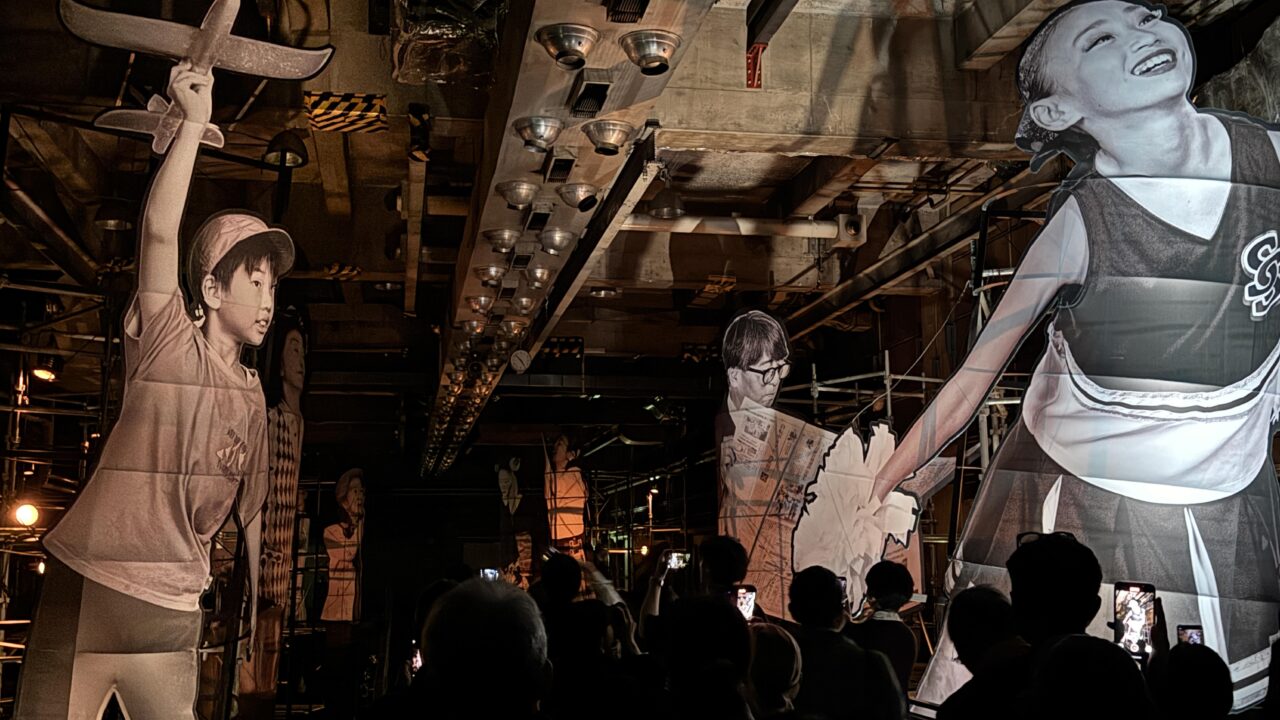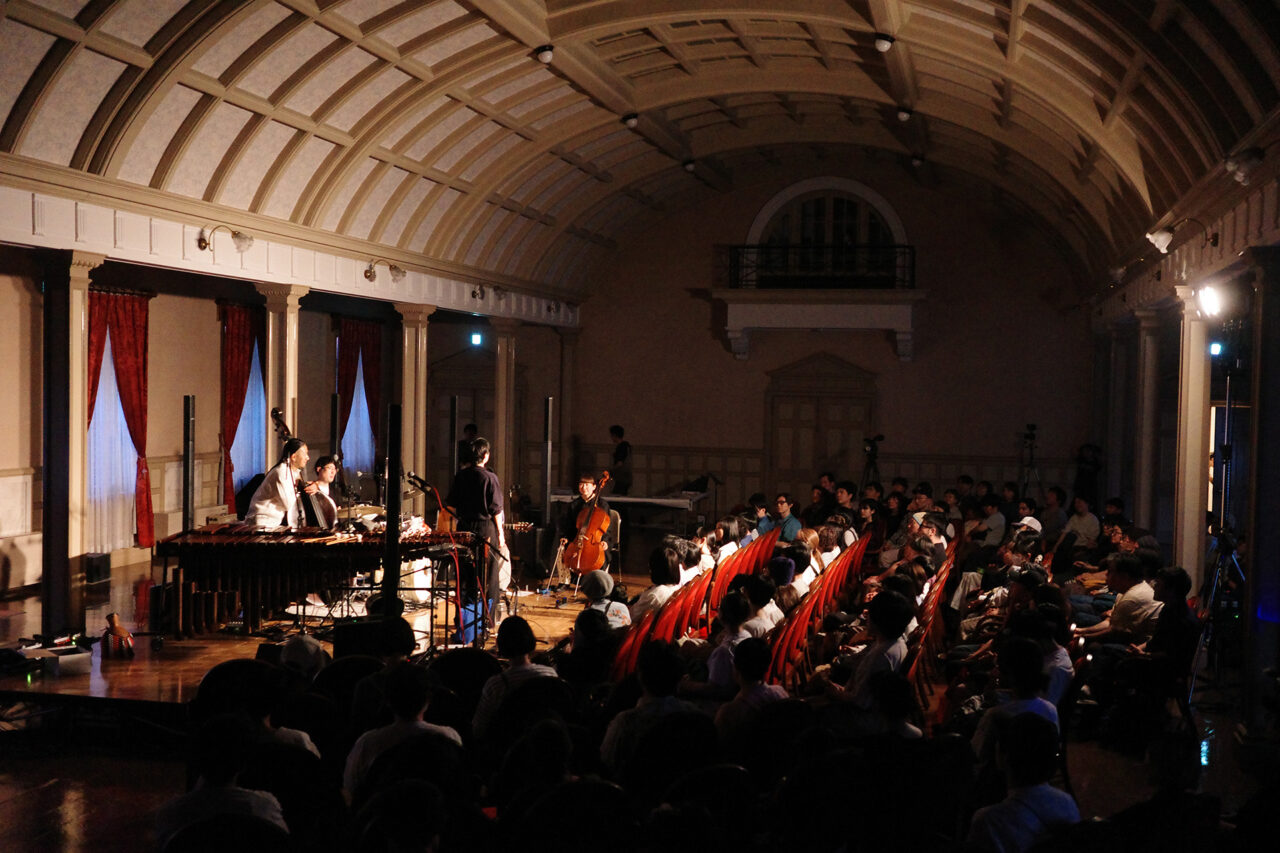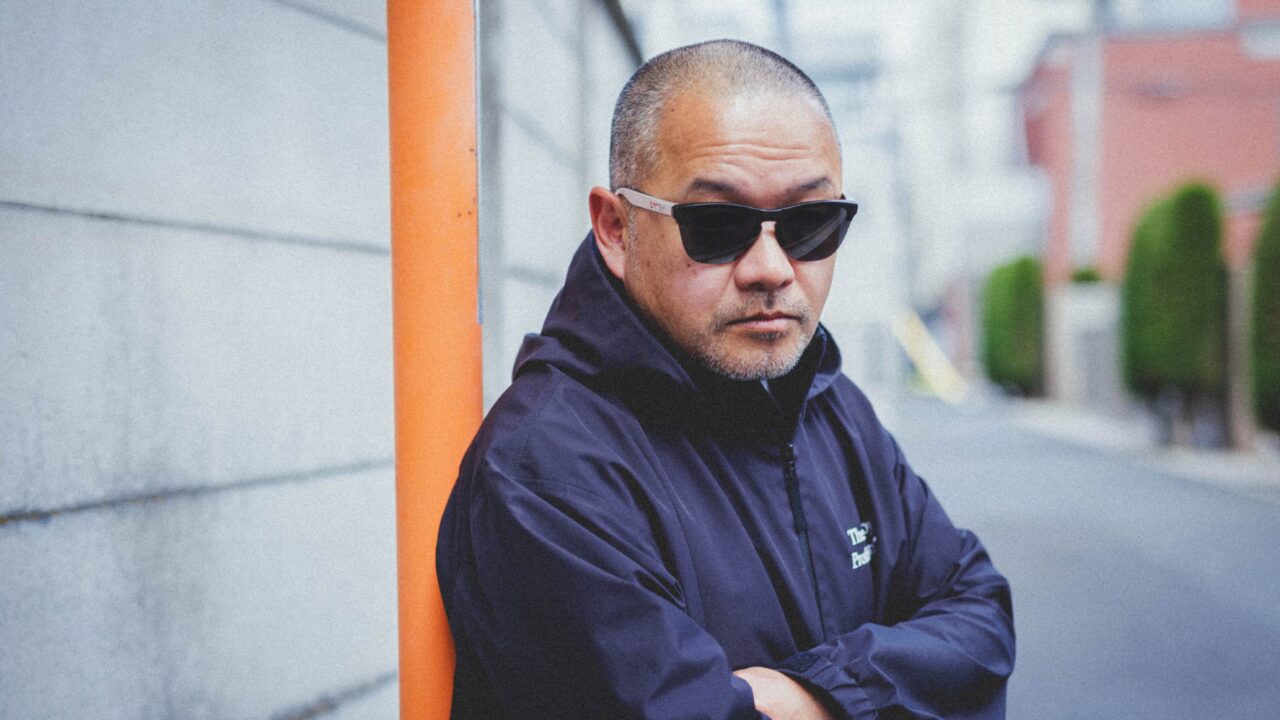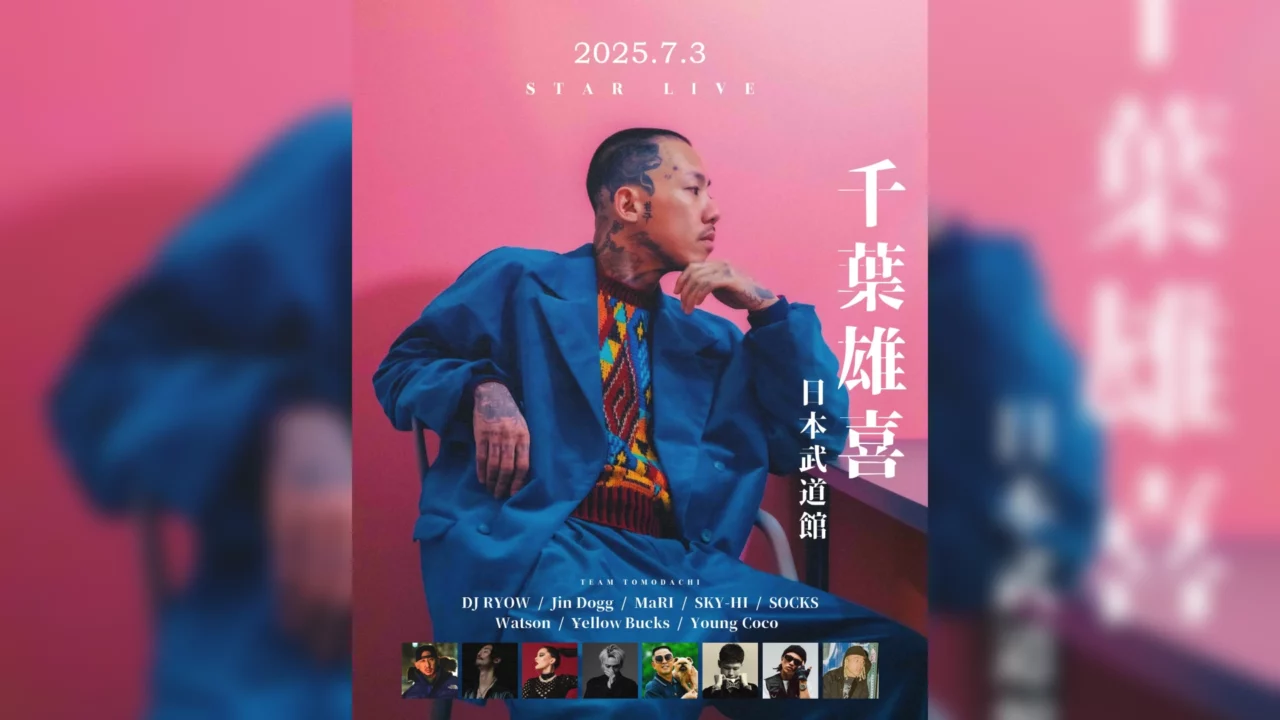The Japanese-language version of the film ‘Blind Willow, Sleeping Woman’ will be released nationwide on Friday, July 26, the same day as the subtitled version.
This film is the first feature-length animation based on a novel by Haruki Murakami. Directed, written, and scored by musician and animation artist Pierre Földes, it adapts and reconfigures six of Murakami’s short stories: “Super-Frog Saves Tokyo,” “Birthday Girl,” “Kaitsuburi,” “The Wind-Up Bird and Tuesday’s Women,” “UFO in Kushiro,” and “Blind Willow, Sleeping Woman.” The work is created using a technique the director calls “live animation,” which is based on live-action footage. This film is Földes’ first feature-length animation, and he also voiced characters in the original version. For the Japanese version, which he had always dreamed of producing, he took on the role of supervisor.
The story is set in Tokyo immediately after the Great East Japan Earthquake, where people who did not even realize they were stuck in their lives awaken and realize the truth within themselves. The story revolves around Komura, who goes to Hokkaido to deliver a small box to two women; his wife, Kyoko, who suddenly disappears after five days of watching the earthquake news, leaving behind a letter; and Komura’s colleague, Katagiri, who returns home to find a two-meter tall “Kaeru-kun” waiting for him.
Upon the release of the Japanese version, the voice cast was announced all at once. Yuto Isomura plays the role of Komura, Hyunri as Kyoko, Shinya Tsukamoto as Katagiri, and Kanji Furutachi as Kaeru-kun. Additionally, Mai Kiryû, Ririka Kawashima, Umeya Hironari, Ryô Iwase, Chika Uchida, Katsumi Toi, Mitsuru Hirata, and Akira Emoto are also listed. The casting emphasized realistic performances suitable for the original work’s atmosphere, considering that the original version used live-action actors rather than voice actors. Furthermore, the Japanese version was directed by Kōji Fukada. Comments from the 12 voice cast members and Fukada have also been released.
Yuto Isomura as Komura
I’m delighted to be involved in the role of Komura in the first animated film based on the work of Mr. Haruki Murakami. At the dubbing studio, we recorded our voices much like on a film set, and under the direction of directors Pierre Foldes and Koji Fukada, we meticulously infused life into the animation, discussing every detail of expression. The grand journey in this mysteriously charming world surely stirs something in everyone’s hearts. I hope you will see it in theaters.Hyunri as Kyouko
Appearing in a work based on the writings of Mr. Haruki Murakami was one of my dreams. And to have it realized in animation, in my first voice acting role, is truly remarkable. Where are the seams between the six disjointed short stories? You get drawn into the intricately woven world of Komura, Kyoko, and the Frog, and even after finishing, you find yourself lingering within that time. This is a tale that was sown in New York in 2009, sprouted in Paris, and now blooms in Tokyo.Shinya Tsukamoto as Katagiri
A world filled with both darkness and light, where one cannot look away. I was grateful to dwell there for a moment. What the director and I discussed was that not everything good is easily understood. Embracing that world, pondering over answers not readily found, and surrendering to its essence. Immerse in its lingering afterglow. What is felt beyond words should become a treasure.Kanji Furutachi as Kaeru-kun
It’s a mysterious piece. A Japanese story set in Japan, animated by a foreign director. That alone is quite uncommon to hear. Yet, it’s through that uniqueness that a mysterious world is depicted. Originally shot with English-speaking actors and then adapted into an anime, the English version seems more fitting with both the visuals and dialogue, making it feel more realistic. However, the true realism of the work lies in its Japanese roots, making the Japanese version equally authentic. Yet, it’s still called “dubbing.” This discrepancy adds to its mystery. However, dubbing, honestly, was very challenging.Mai Kiryû as Shimao
Under the guidance of Directors Pierre and Koji, I’m very grateful for the assistance from Yuto Isomura and Chika Uchida, who were also in scenes with me, as I took on the role of Shima. It was a joy to explore the merits, challenges, and depths of “voice” as a form of expression, and it was a highly stimulating and educational experience. I hope viewers will enjoy “Blind Willow, Sleeping Woman” in the Japanese dubbed version as well.Ririka Kawashima as Komura’s neighbor
A mysterious sense of the world, delicately and boldly portraying the inner turmoil stirred by events in quiet everyday life. The lightness that lingers in the body after watching, as if one could float away somewhere, is pleasantly enchanting. I am very happy to have been part of this film. I invite you to experience the world of “Blind Willow, Sleeping Woman” in theaters.Hironari Umeya as Junpei, Komura’s nephew
When I first watched this film, its wonderful music immediately transported me to another world. There, various human stories, rooted in the unchangeable reality of earthquakes, unfolded like dreams. When I woke up from that dream, I felt I had learned the importance of thinking about the people and things we cannot see. Although voice acting was new and challenging for me, being involved in such a fantastic work was a turning point and an honor for me.Ryo Iwase as Sasaki, Komura and Katagiri’s colleague
I was incredibly happy to be part of such a luxurious production where Koji Fukada and Nobuaki Doi teamed up for the recording! Furthermore, Pierre was also present during the session, and being in the studio felt like bathing in a shower of their individuality, intelligence, and love for the project. Amidst the beautifully unsettling visuals and sounds, the characters exhibit strangely realistic gazes and sometimes comical gestures. While following their journey, please experience the sensation of the blurred boundaries between dreams and reality, news and allegory, all in the cinema.Chika Uchida as Keiko, Sasaki’s younger sister
The six short stories seamlessly converged into one narrative, as if they were always meant to be a single piece, showcasing Pierre Foldes’ directorial respect for the original work and his expansive storytelling skills. Under the direction of Koji Fukada, the recording for the Japanese version was conducted with a consistent approach of exploring acting rather than mere dubbing, resulting in a very intense process of seeking Japanese authenticity while building the performance. It was particularly enjoyable to react alongside Mai Kiryu, who played the role of Shima. This mysterious and captivating work transcends the boundaries of both animation and film.Katsumi Toi as Suzuki, Komura and Katagiri’s boss
What I first felt while watching it was that all the characters were truly alive there, more vividly than in the anime I usually watch, as if they were embracing me closely. There was a certain inexplicable humidity from Haruki Murakami’s original novel, along with a strangely refreshing atmosphere. It felt like it fit perfectly not in Japanese or American animation, but in French animation. It reminded me of the French films I used to love. After finishing it, I found myself wanting to be enveloped in that mysterious atmosphere again, and I feel like I’m already getting sucked into it.Mitsuru Hirata as Ken, Kyoko’s friend
It was a peculiar experience to dub a uniquely crafted animation, depicting a strangely realistic modern Japan alongside oddly lifelike Japanese characters, under the direction of both Pierre Foldes and Koji Fukada. How to confront negative emotions… The sense of uncertainty and detachment felt reminiscent of the post-reading experience of a Haruki Murakami work.Akira Emoto as the owner of Kyoko’s former part-time job
Reading the script and actually seeing the animation, and then dubbing it, brought about quite a change in my perception. I worked hard while grappling with the images. I would be delighted if you could watch it.Director: Koji Fukada
Immersed in Pierre’s unprecedented passion for the Japanese version, the recording process was nothing short of enjoyable. Discussing with Pierre, who keenly listened to the actors’ words, we approached the work with a sense of revitalization, as if starting from scratch. It seems that the director is aiming to surpass the original English version even with this Japanese version, and I believe that tension was conveyed to the actors as well. Please enjoy Haruki Murakami’s world, depicted in a more human-like manner than ever before.
Blind Willow, Sleeping Woman
Director/Screenplay: Pierre Foldès, Original Story: Haruki Murakami (“Save the Frog Prince,” “Birthday Girl,” “Crabs,” “The Wind-up Bird and Tuesday’s Women,” “UFO in Kushiro,” “Blind Willow, Sleeping Woman”)
[Original version]
Voice Cast : Ryan Bommarito, Shoshana Bilder, Marcelo Arroyo, Scott Humphrey, Arthur Holden, Pierre Fordes
Japanese version
Voice Cast : Yuto Isomura, Hyunri, Shinya Tsukamoto, Kanji Furutachi
Mai Kirayu, Ririka Kawashima, Hironari Umeya, Ryo Iwase, Chika Uchida, Katsumi Toi, Mitsuru Hirata, Akira Emoto
Director: Koji Fukada, Translation Assistance: Motoyuki Shibata, Sound Director: Masaru Usui, Supervisor: Pierre Fordes
2022/109 min/Partnership with France, Luxembourg, Canada, and the Netherlands
Original title: “Saules Aveugles, Femme Endormie” / English title: “Blind Willow, Sleeping Woman
Distributors: Eurospace, Interfilm, New Dire, Repro Entertainment
Official website: http://www.eurospace.co.jp/BWSW
Official SNS: X:@eurospace_d Instagram:@eurospace_distribution



























